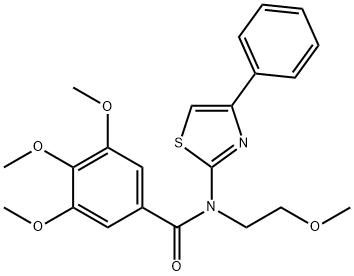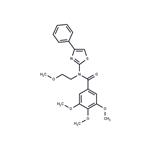Description
Eact is an activator of the calcium-activated chloride channel anoctamin 1 (ANO1). It increases chloride currents in FRT cells expressing human ANO1 (EC
50 = 3 μM). It is selective for ANO1 over cystic fibrosis transmembrane conductance regulator (CFTR) chloride channels and epithelial sodium channels (ENaCs) in FRT cells at 10 μM. Eact (20 μM) increases the rate of submucosal gland fluid secretion in human bronchi isolated from patients with cystic fibrosis and healthy individuals. It increases production of mitochondrial reactive oxygen species (ROS), reduces the mitochondrial membrane potential, and induces apoptosis in rat lung microvascular endothelial cells (RLMVECs), as well as reduces total cell counts in pulmonary artery endothelial cell populations isolated from patients with idiopathic pulmonary arterial hypertension (IPAH). Eact also activates transient receptor potential vanilloid 1 (TRPV1) in HEK293T cells expressing the mouse receptor (EC
50 = 11.6 μM) and induces scratching and licking behaviors in wild-type, but not
Trpv1-/-, mice.
Uses
Eact is a Ca2+ activated chloride channel protein, which may be used for the treatment of diseases and disorders involving this particular channel such as cystic fibrosis, disorders related to salivary gland dysfunction, dry eye syndrome and intestinal hypomotility.
Biochem/physiol Actions
Eact activates the Calcium-activated Chloride channel (CaCC) TMEM16A CaCC. Eact stimulates CaCC conductance in salivary gland cells and submucosal airway epithelial cells. The compound Eact also stimulates submucosal gland secretion in human bronchial tissue and smooth muscle contraction in mouse intestine.


